
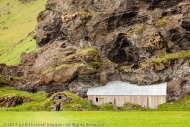
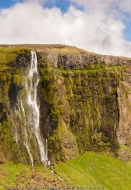
A couple of weeks ago someone asked me what kind of Joshua tree images I had in my image library. Seems the guy is a big fan of the rock band U2, and “The Joshua Tree” being the name of their fifth studio album, he thought it would be cool to have some Joshua tree prints at his business. I had already post-processed a few images after my trip to Joshua Tree National Park back in the spring of 2013, but I thought this would be a good time to dig into the archives and see what else I could find. Besides, since it feels like a desert around here (to native Pacific Northwesterners, at least), I thought I may as well show you some desert imagery this week.
I had originally written briefly about the park in my earlier article “General Drift – National Park Inspector“, but that was more a story about the interesting people I met there than about the park itself.
Joshua Tree National Park lies in southern California, 140 miles east of Los Angeles, just north of I-10 and right on the edge of the famous San Andreas Fault. Originally set aside in 1936 as the Joshua Tree National Monument and promoted to park status in 1994, it encompasses both the Colorado Desert in the southern and eastern part of the park as well as the Mojave Desert to the north. The designation as a national monument was intended to protect a wide variety of plants and animals, not the least of which was the famous Joshua tree, found in the northern part of the park.

A joshua tree casts its unique shadow on the desert floor, in Joshua Tree National Park, California.
The Joshua tree is a type of yucca plant, a member of the Agave genus, and is called a tree due to its tree-like habits. American Indians used it to make baskets and sandals, and included its flower buds and seeds in their diet.
When the Mormons came along in the mid-19th century and noticed the Joshua tree’s outstretched arms, it reminded them of the story of the Biblical Joshua in which he reached up his hands to the sky in prayer.
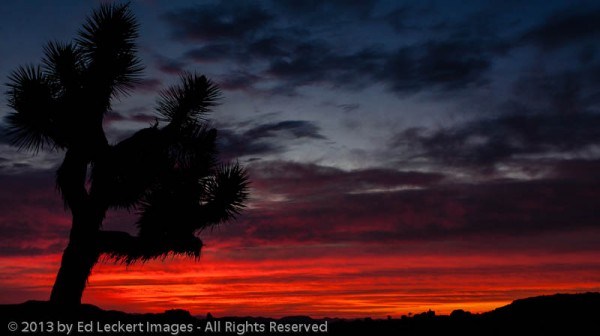
The sky turns crimson during the pre-dawn hour, at Jumbo Rocks Campground, Joshua Tree National Park, California.
Joshua trees can initially grow at a rate of about 3 inches (almost 8 cm) a year and can live to be hundreds or even a thousand years old, although without annual growth rings it is difficult to determine a plant’s age. Some specimens can reach almost 50 feet (15 m) in height, though the largest on record was reported to be 80 feet (24 m) tall and was estimated to be about 1000 years old.
What’s interesting about Joshua trees is that they usually do not branch until they have bloomed (unless a weevil destroys the tip), so any time you see one that consists of only a single column, you’ll know why it hasn’t branched. They don’t bloom every year, being dependent on the amount of rainfall they’ve received. It’s also thought that a winter freeze is necessary for blooming.
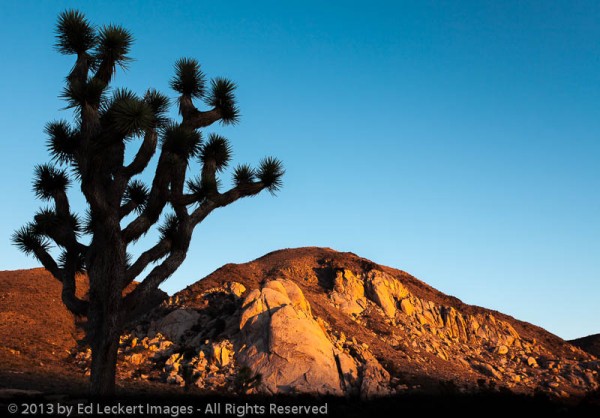
A Joshua tree appears in silhouette as the hill in the background glows in the last light of the day, in Joshua Tree National Park, California.
I happened to be in the park during a record bloom season, and didn’t even realize it until I had returned home. Heck, I thought they bloomed like crazy every year! One report claimed that no living person had ever witnessed a bloom as prolific as in 2013. The media rushed to the conclusion that global warming was the cause and it had triggered a stress response from the plants, but the fact is that we really don’t know the cause. I don’t see any reports of outsized blooming in 2014 or 2015.
The park is also very popular as a world-class rock climbing and bouldering destination. There are over 8000 climbing routes through the high desert monzogranite terrain. Monzogranites are biotite granite rocks that are considered to be the final fractionation product of magma.
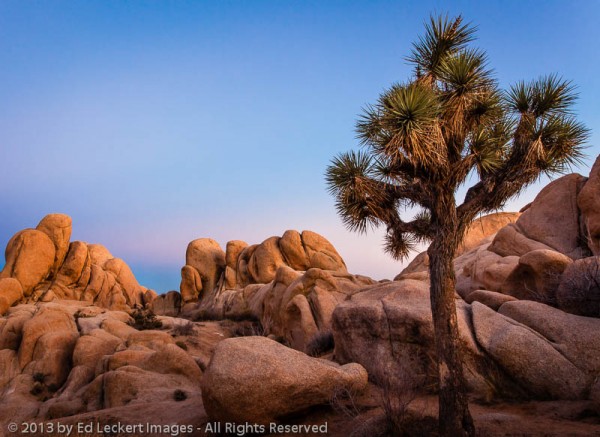
This joshua tree and rock formation glow in the dwindling light of twilight, at Joshua Tree National Park, California.
So there you have it, a desert national park with a large share of the world’s population of Joshua trees and a mecca for rock climbers. It’s a wonderful place to visit in the spring, but I’m sure glad I’m not there now!
